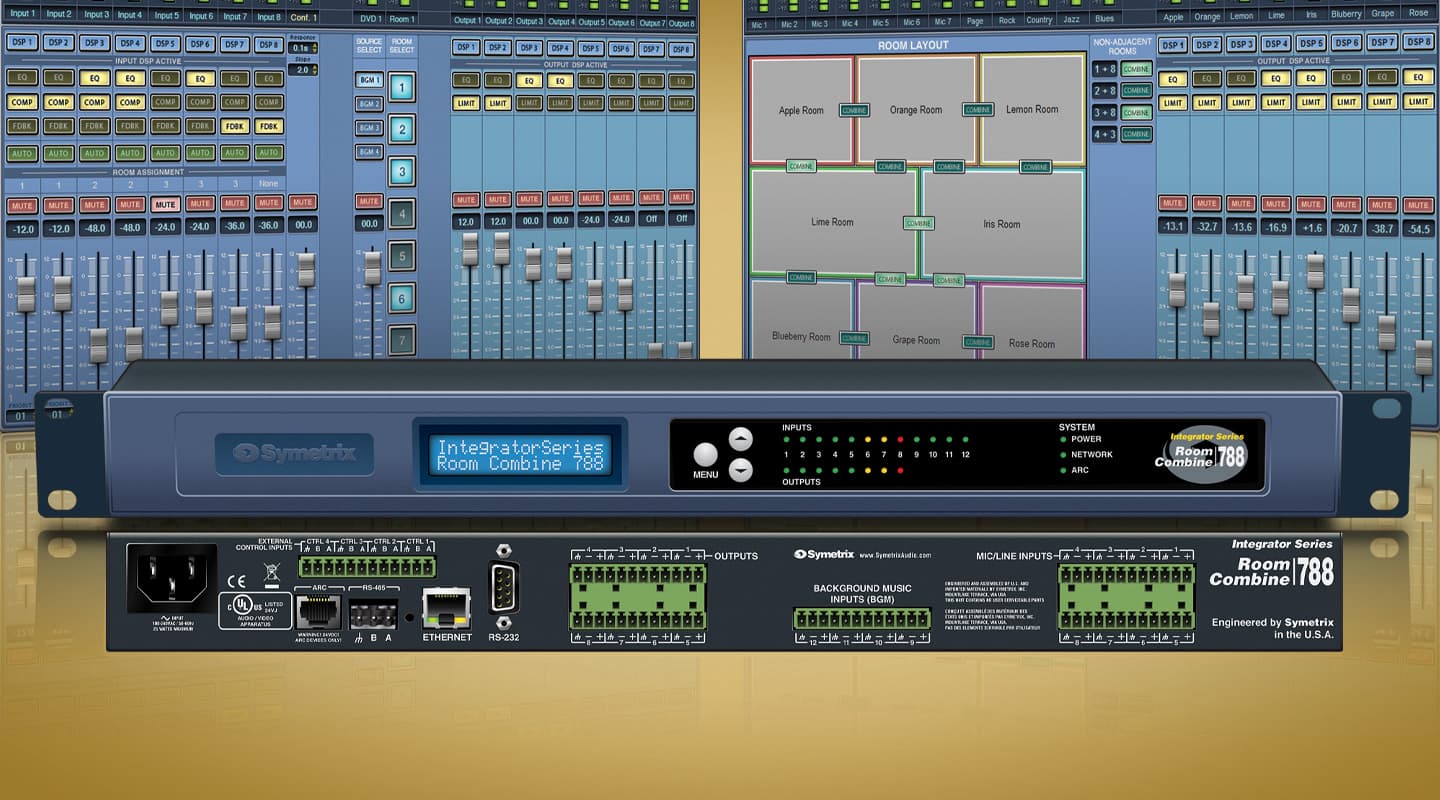
Review: Symetrix 788 Room Combine & 780 Automix Matrix
Signal processing for real world audio installations.
Text:/ Graeme Hague
Symetrix’s Room Combine 788 and Automix Matrix 780 are signal processors aimed at automating room microphones, amplification, and zone audio distribution. At first glance the models are very similar and, given a choice, you might find yourself scratching your head trying to figure out what’s best for your needs. Production Audio Services made it easy for me by sending both.
These units are designed as permanent installation devices. By that I mean, all the connections on the back, apart from the network and RSS232 ports, are detachable Phoenix plugs (essentially grub-screw terminal blocks). If you’re envisaging a situation where someone might occasionally want to scrabble around in the back and swap a few plugs, that’s not really going to happen. The wiring is expected to be connected and rarely bothered with again.
Which immediately brings me to a minor quibble. Like many permanent-install devices these Symetrix units have a Cat5 connection on the rear and a GUI interface with the intention that controlling everything is done through the client’s existing network. A local workstation accesses the Symetrix’s software and via a specific IP address performs whatever reconfiguring is needed. However not all organizations or staff are quite so savvy with technology and it’s not always a good idea to have such peripheral equipment permanently connected. Networks have a nasty habit of crashing and, password protection aside, idle fingers might stray upon this neat-looking sound mixer thingy on their work computer and before you know it, the managing director’s confidential meeting is being piped to the ladies’ toilet.
A network or USB connection on the front of the unit is the simple answer, providing the option that an IT or audio technician can plug in a laptop, tweak away as much as they want and once they’ve disconnected, the applied settings are safe. The device stays off the network.
Another small concern is highlighted by Symetrix. Both the 780 and 788 models have provisions for attaching Adaptive Remote Controller wall panels (ARC) and these also use an RJ45 Cat5 connection. A full-page warning in the manual and stickers across the actual ports advise the operator that these ARC connections can output up to 24VDC and that plugging in your Ethernet cable by mistake might wipe out every network server from your office to Bangkok. There is a lot be gained from the standardising of cables and connectors, but it’d be comforting to see a little more fail-safe thought put into avoiding this potential disaster apart from a removable sticker.
Enough complaining.

POINTLESS PIGEONHOLING
First out of the box was the Matrix 780. Like all the series, it’s a 1RU unit with small, front-panel LED indicators that don’t really tell you much – the network GUI is the place to go. Likewise the simple menu access and selection buttons only provide a choice of muting any of the eight outputs and a master volume setting. To be fair, the 780’s wide matrix routing capabilities and comprehensive DSP features wouldn’t translate into a practical front-panel control anyway and it’s sensible for Symetrix not to even try. Hook up a PC and save yourself a lot of headaches.
As always, I had a good look at the manual before attempting too much (honest). You can’t accuse Symetrix of not identifying its target market. The introductory blurb states the 780 is “designed to do justice to sound where justice matters most”. I thought perhaps the copywriter had worked a little too late at night or maybe had a second job at Marvel Comics, but no, the intro went on to mention consistent sound in courtrooms, government chambers, corporate boardrooms, and houses of worship. I can think of a dozen other applications like schools, hospitals… so I thought it was a bit odd to pigeonhole the 780 like this.
Installing the accompanying software from an enclosed CD was simple and connection to my Vista laptop, since it was a direct Cat5 link, presented no problems. A wizard figured everything out and should deal with more complex networks as well. Boot up the virtual mixer and all the powerful routing potential and DSP features of the Matrix 780 are suddenly clear.

There are eight microphone/line inputs and a further four line-only inputs that can be assigned to any of the eight outputs. It has full matrix capability – anything can go anywhere. The DSP effects on the microphone channels have everything covered. On the Input there is a digital trim, separate phantom power, and a phase invert. A nice addition is a noise generator. If you are setting things up in an empty room, this will let you double-check that the various inputs are going where they should be, particularly to any recording media. Next is a ‘British’ EQ, a three-band parametric EQ flanked by high and low shelf filters. An additional rumble filter set at 75Hz is almost overkill.
The compressor plug-in is a standard affair with a choice of soft, medium or hard settings. The final DSP on the microphone inputs is an automatic feedback eliminator. We won’t labour the point about the range of controls here, suffice it to say Symetrix has included some exacting parameters that should solve any feedback issues. At the same time the company is sage enough to remind users that AFC isn’t a perfect science and should be used along with, not instead of, good system design practice. The AFC has a Panic Limiter as well, basically a threshold setting that says, ‘If it’s this loud, it’s feedback you idiot!’ and things are shut down.
For individual DSP, the line inputs only get the EQ and an Automatic Gain Control (AGC), but they do have access to the Automix Gating processing, which can be switched on or off. All 12 input channels can be given a priority level. Otherwise a master channel strip gives you global settings for gating sensitivity, NOM (Number of Open Microphones) levels, and the NOM count, plus a Last On selection. All these apply to every channel with the Auto turned on, so interestingly you’d have to pay attention to your initial mix settings to avoid any particular stand-out microphone (such as a lectern mic) dominating the Automix.
At the other end of the matrix, the eight outputs each have no less than an eight-band parametric EQ plus high and low shelving (for some reason this isn’t ‘British’) and a delay setting for speaker alignment. Finally there’s a limiter for each channel, too. Plainly, you’d have no excuse for poor tone with all this EQ processing available and DSP effects. Still, the Loudspeaker Manager, Limiter, and Output sections can be controlled by Smaart software, if you want. Talking of controlling, another wizard makes short work of configuring any ARCs attached. Files of every different set-up can be saved and loaded when needed from your PC network, while either global or selective presets are stored in an internal memory.
The more I looked, the more I was impressed by the Automix Matrix 780. I still want that front-panel network port though.

WORSHIP AT THE USER-FRIENDLY ALTAR
The Room Combine 788 is similar to the 780 in regards to inputs, outputs, and DSP features. Rather than a matrix of signal routing, the 788 offers a graphical representation of eight virtual rooms, which can be connected, segregated, have different volumes, and configured into as many combinations as you see fit, which are then saved as presets. The Combine Page (see illustration) looks a bit like a Sunday newspaper’s puzzle, but you can see the boffins at Symetrix have actually put a bit of thought into making what could be a difficult task into something user-friendly.
Aside from any ARCs in remote locations, while the Automix Matrix 780 could be installed and set up by itself then left alone for most of the time, the Room Combine 788 will need some kind of extra control interface – not to mention a microphone – to make use of its paging role. That is unless you’re prepared to train an operator to control everything from the GUI, which is possible.
Both units are examples of internal DSP processing along with a network GUI completely replacing the traditional equipment of an office paging mixer. Symetrix has definitely come up with the goods. Maybe the push at the courtroom and houses of worship market is a wink at the small leap of faith involved in relying on a software-based system. Then again the ARC and RS232 connections can provide all the tactile control you might want.
So don’t be fooled by the unobtrusive black box in the rack. Plug it in, turn it on, and connect a PC. Everything’s there.
PRODUCT DETAILS
Price
Automix Matrix 780: $4487
Room Combine 788: $5388
Symetrix: www.symetrix.audio.com
Production Audio Services: (03) 9264 8000 or www.productionaudio.com.au

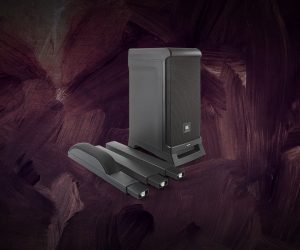

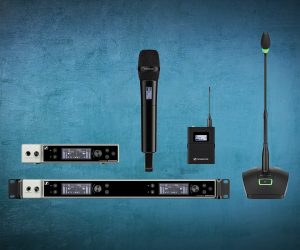

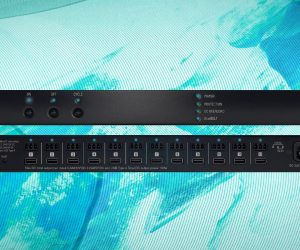
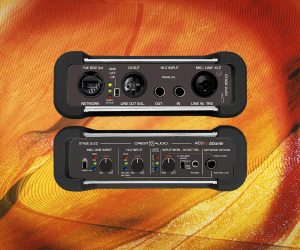
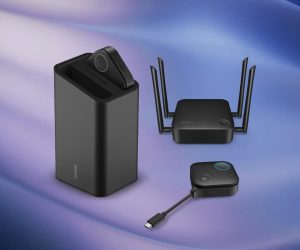

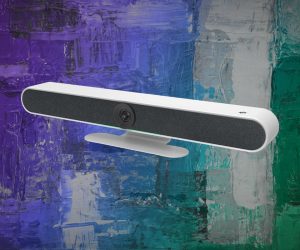
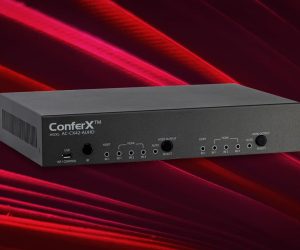
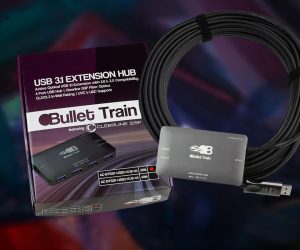
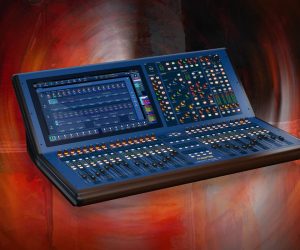


RESPONSES